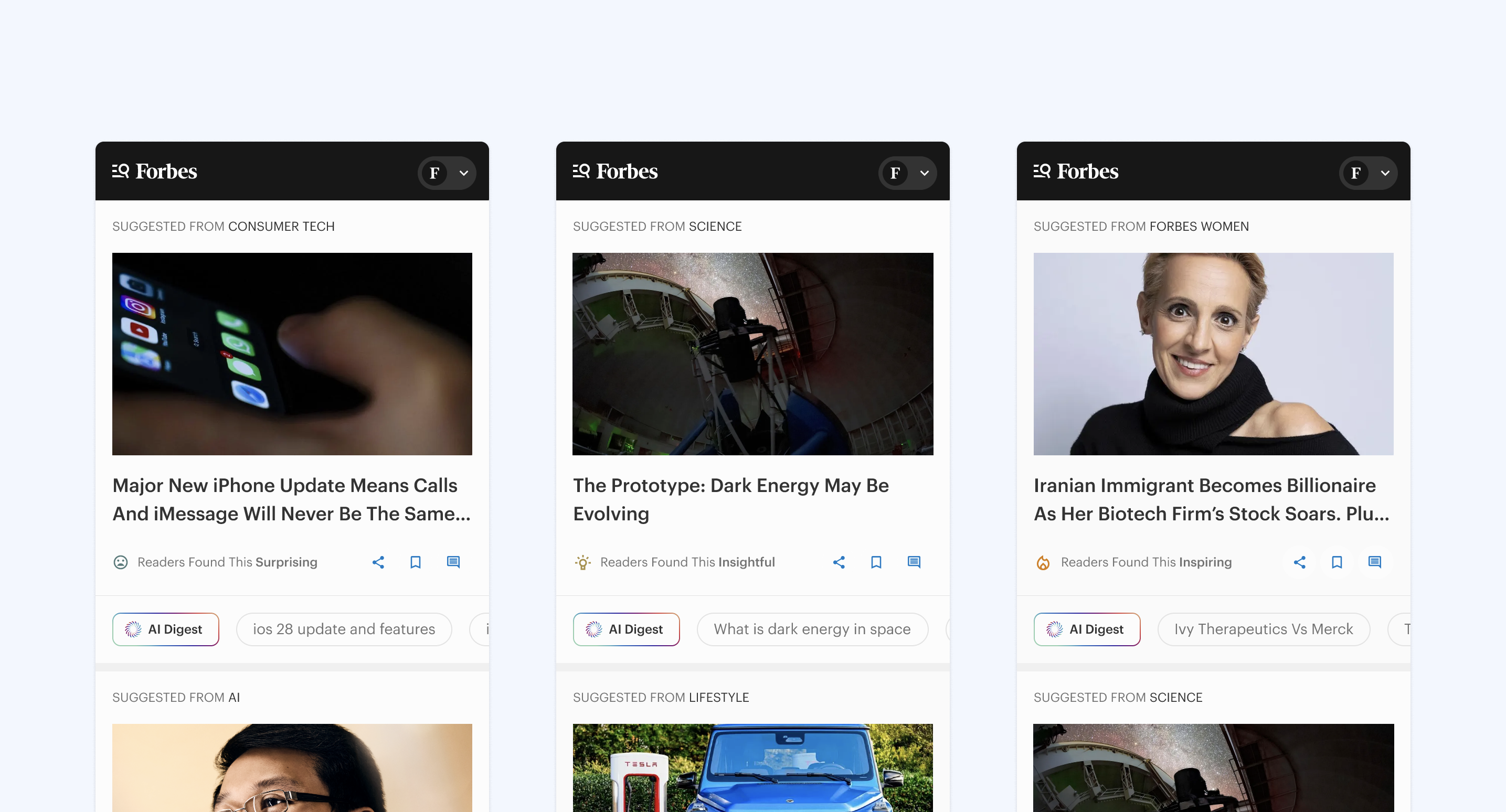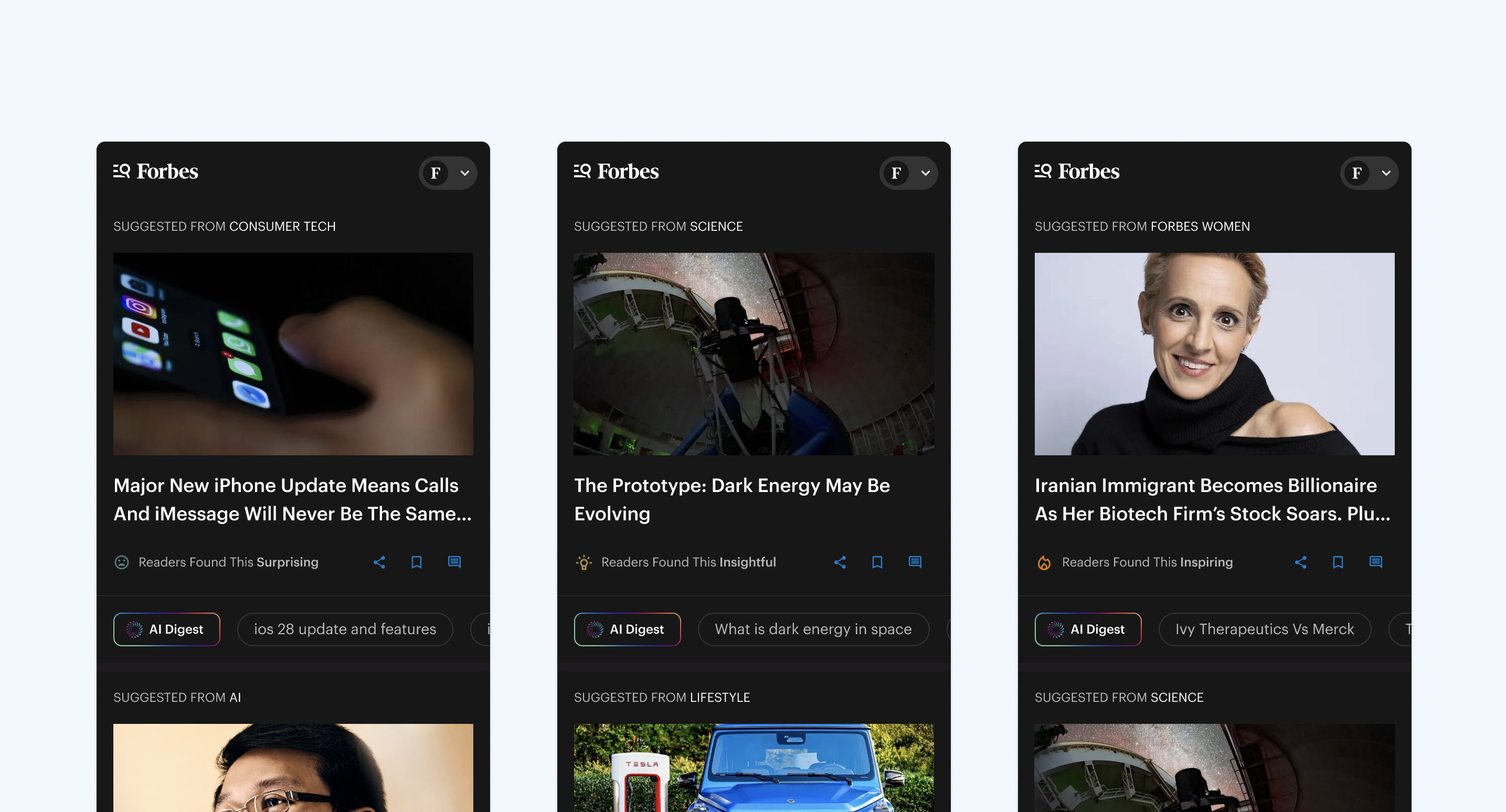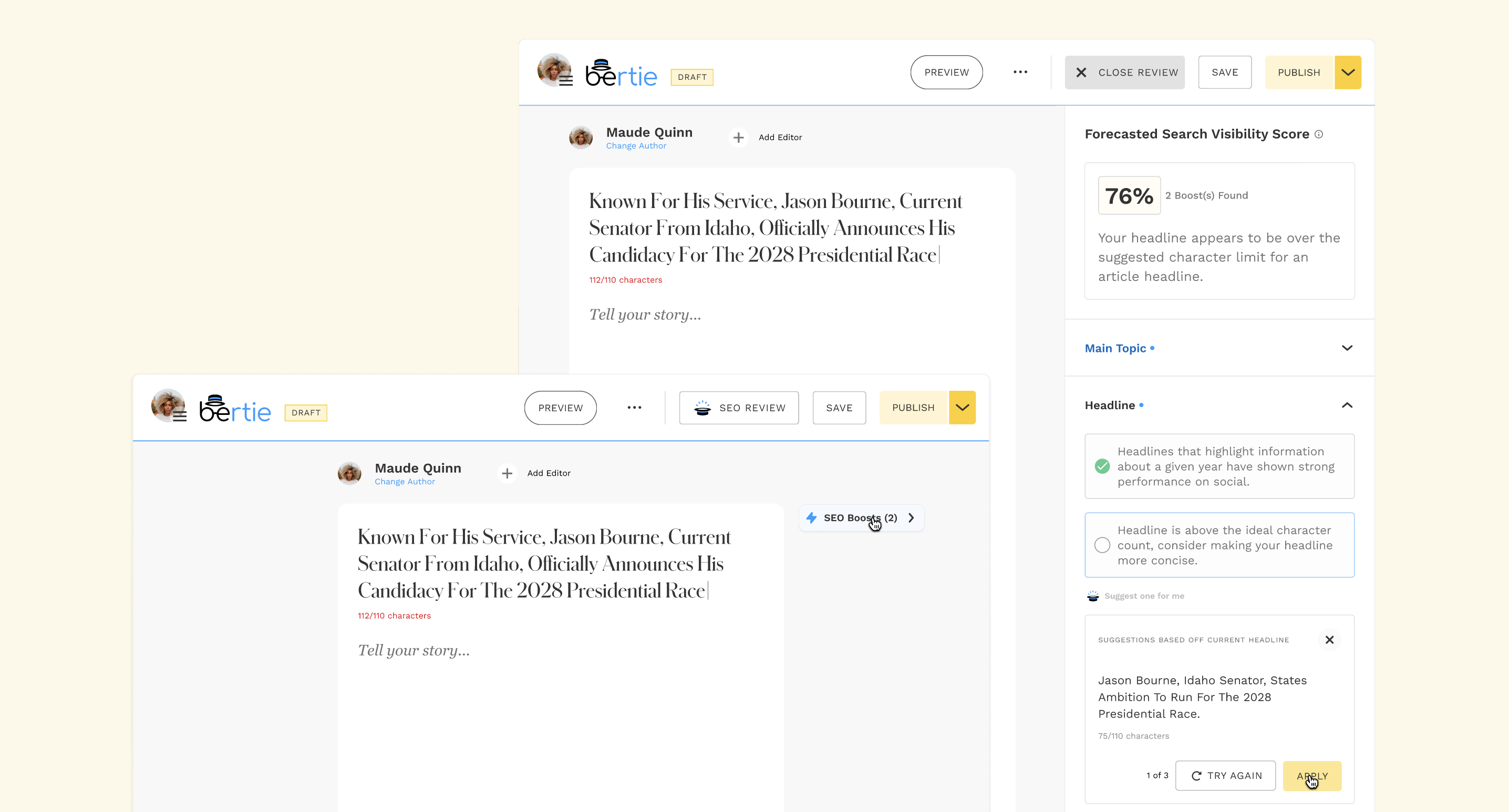Forbes Explore: Rethinking Information Consumption Patterns Amidst The Proliferation of AI
Introduction: Setting the scene
This wasn’t an initiative that came out of our usual roadmap, but as a digital media company, we had to keep up with the times. Younger audiences were moving away from long-form articles, and with AI in the mix, there was a need to create an experience that leveraged emerging patterns in how people were consuming information today.
CAVEAT
Even before AI's boom, digital media companies were experiencing year-over-year declines in site traffic.
The Challenge
All of this, especially the rise of AI, made the shift from long-form content feel like an urgent threat for the company to address.
As a response, our Chief Product Officer brought together a small team and gave us a clear challenge:
challenge
"Rethink Information Consumption Patterns Amidst The Proliferation Of AI And Create A Homepage To Represent That."
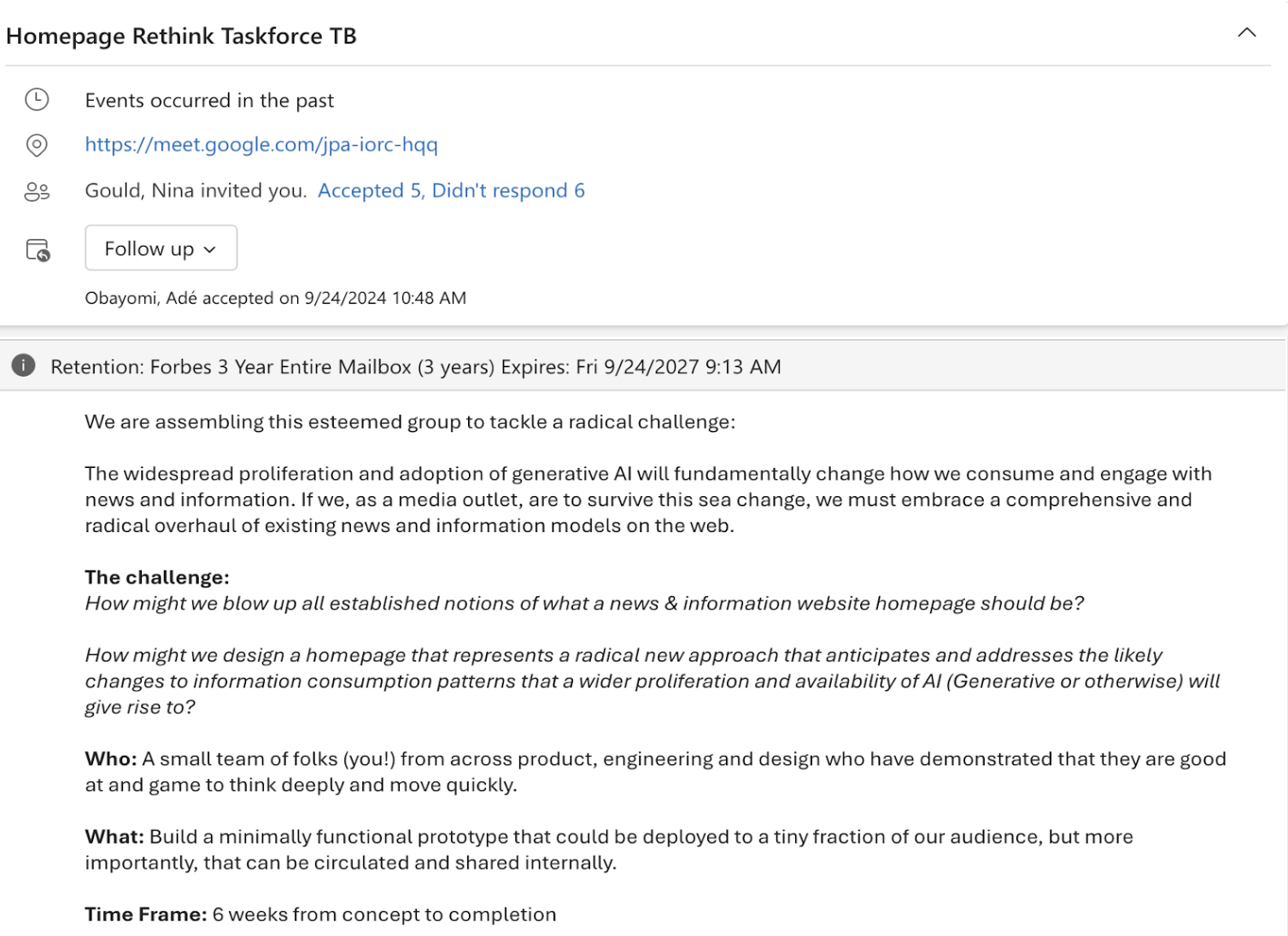
Hackathon Taskforce Invite.
Results & Impact
- Through a LinkedIn post by Forbes' Chief Digital & Information Officer, Explore: A News Briefing Experience launched in a silent beta on April 1st, 2025.
- Within 4 months, Explore had over 10k users, with the average user spending 90+ seconds on the page.
- The launch also gave the team and I the opportunity to present Explore at the company-wide Global Strategy Meeting.
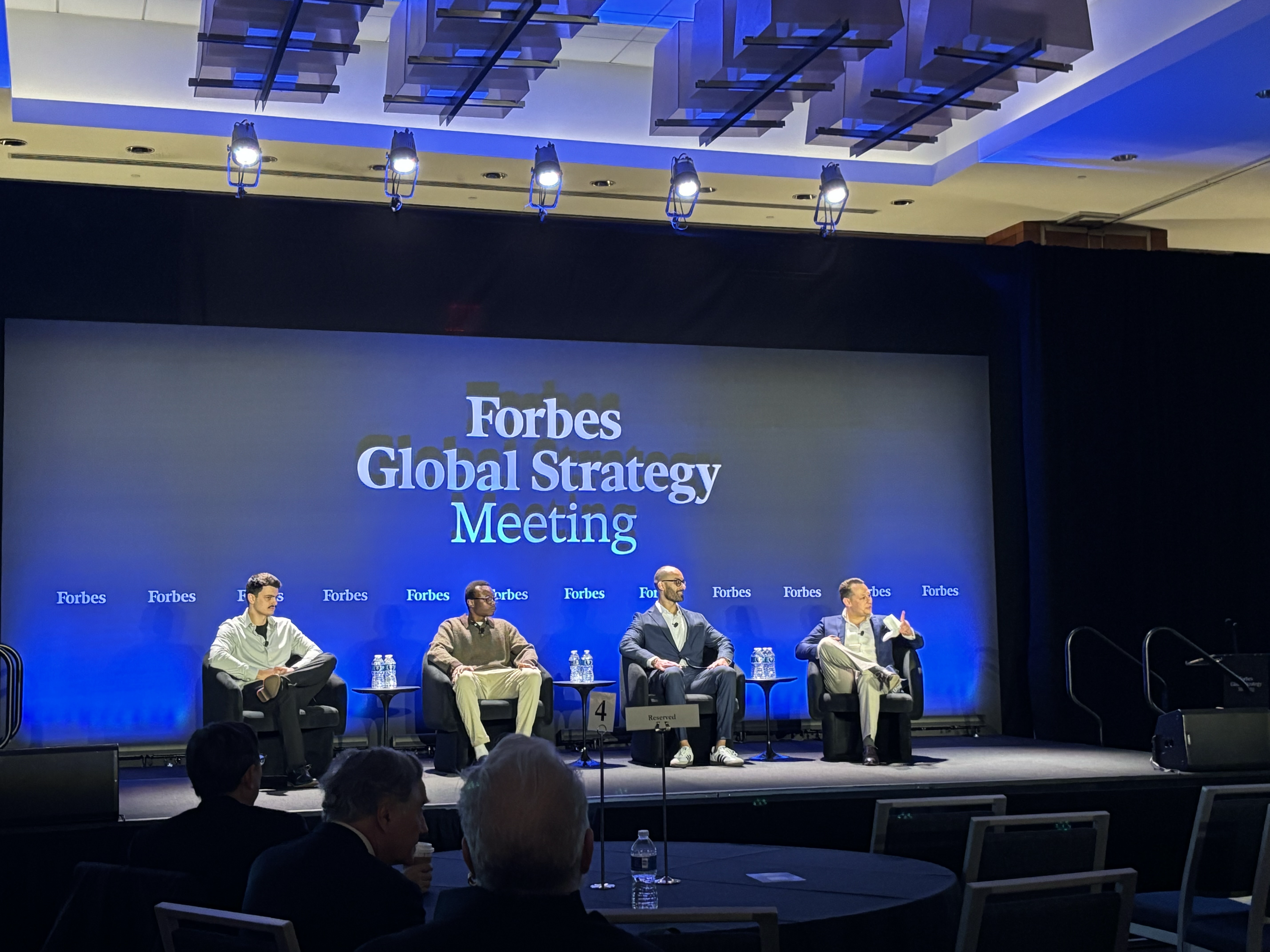
Speaking at the Global Strategy Meeting with the Explore team.
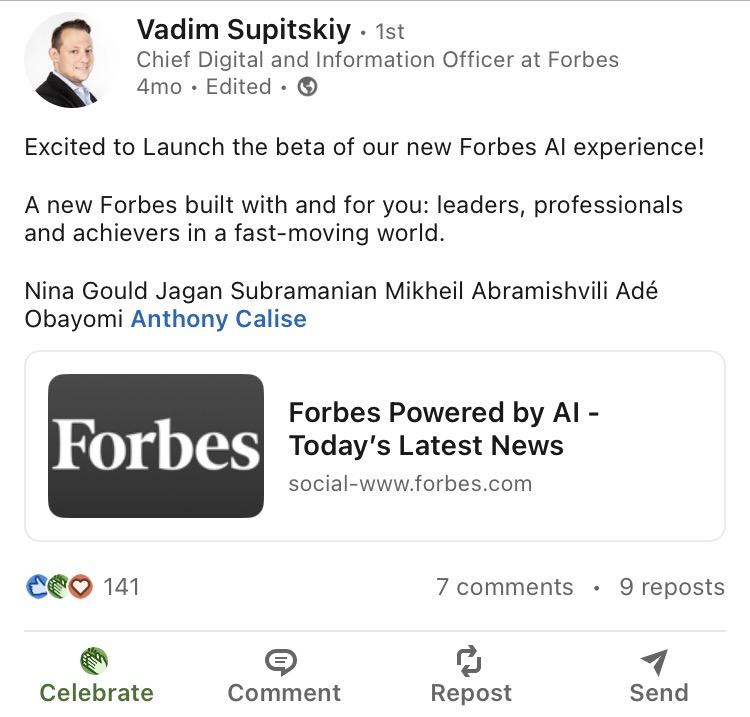
Explore Launch.
At Its Peak, Explore Achieved:
*Legacy homepage was the Forbes.com landing page that existed before the launch of Explore. It was the page surfaced to majority of Forbes' users before its redesign in October, 2025.
Process: How We Got Here
Research & Discovery
Given the broad challenge of rethinking information consumption for a modern publishing company, the team had no shortage of directions to consider.
But from the start, one goal united us: to build a delightful, AI-first reading experience for news.
At the start of our six-week hackathon, I led user research alongside Jagan,
Forbes' Director of AI Products. Through surveys and in-depth interviews, we identified
key gaps in the current news experience.
Interviews revealed the most actionable insights,
with two standout user stories shaping our direction. Let's call them User 1 and User 2.
User Research Qualitative Coding.
User Research Qualitative Coding.
User Research Qualitative Coding.
User Research Qualitative Coding.
User 1 was a power reader. They subscribed to both The Wall Street Journal (WSJ) and their local news outlet, the Canadian Broadcasting Corporation (CBC), consuming news daily with intentionality.
In contrast, User 2 represented a more passive audience: someone who primarily encounters news through the MSN app on their laptop and by chance, through Instagram or X (formerly Twitter).
This contrast helped crystallize the gap we needed to bridge in:
Creating an experience engaging enough for casual browsers, yet rich and trustworthy enough for committed readers.
Highlighted Quotes
Across both user types, a common sentiment was inferred by way of these two quotes:
User 1 on how they interact with articles.
" It's a normal reaction of mine to go to the comment section and see what people are saying. Sometimes it's meaningless but sometimes it brings another perspective or summary. "
User 2 on Instagram as an ideal platform for news consumption.
" Like with Instagram, I like the idea of getting various pieces of information quickly. "
Insights
These insights informed our design decisions and helped us create a more relevant and engaging experience.
Insight 1
Reader to Reader Perspectives
User 1 valued the comment section as a social layer; using other readers' takes for context, a new perspective, and even a quick summary that extended beyond the article itself.
Insight 2
Bite Size, Quick Delivery News
User 2's reference to Instagram suggested they valued speed and brevity over today's model of digital publishing which supports long-form reading by way of dense articles.
Insight 3
Low Friction Engagement
Both users gravitated towards effortless information consumption: User 2 by quickly scanning multiple bite-sized pieces, and User 1 by scrolling through comments instead of the article itself; seeking a "cleaner reading experience" free from the visual noise of ads and content recirculation units.
From here, we created this HMW statement:
hmw statement
How might we design a quick, snackable news experience that leverages peer commentary and empowers users to grasp the essence of multiple stories more easily than reading a single dense article?
The Solution
Features
The key features that emerged from our research insights and user needs.
Article Digest: AI-Curated Summaries
Digests were designed to save users time in the exploration phase.
Readers got 3 contextual summaries directly from the source article. A bread-and-butter summary, a grounding quote, and a “why it matters” lens that ties the story back to broader social, historical, & even cultural trends, making news consumption more relatable and meaningful.
This quick, digestible format allows users to grasp not just what happened, but why
it’s significant in a larger context without having to commit to a full read. At the same time,
it provides a clear pathway to the full article for those who want to go deeper.
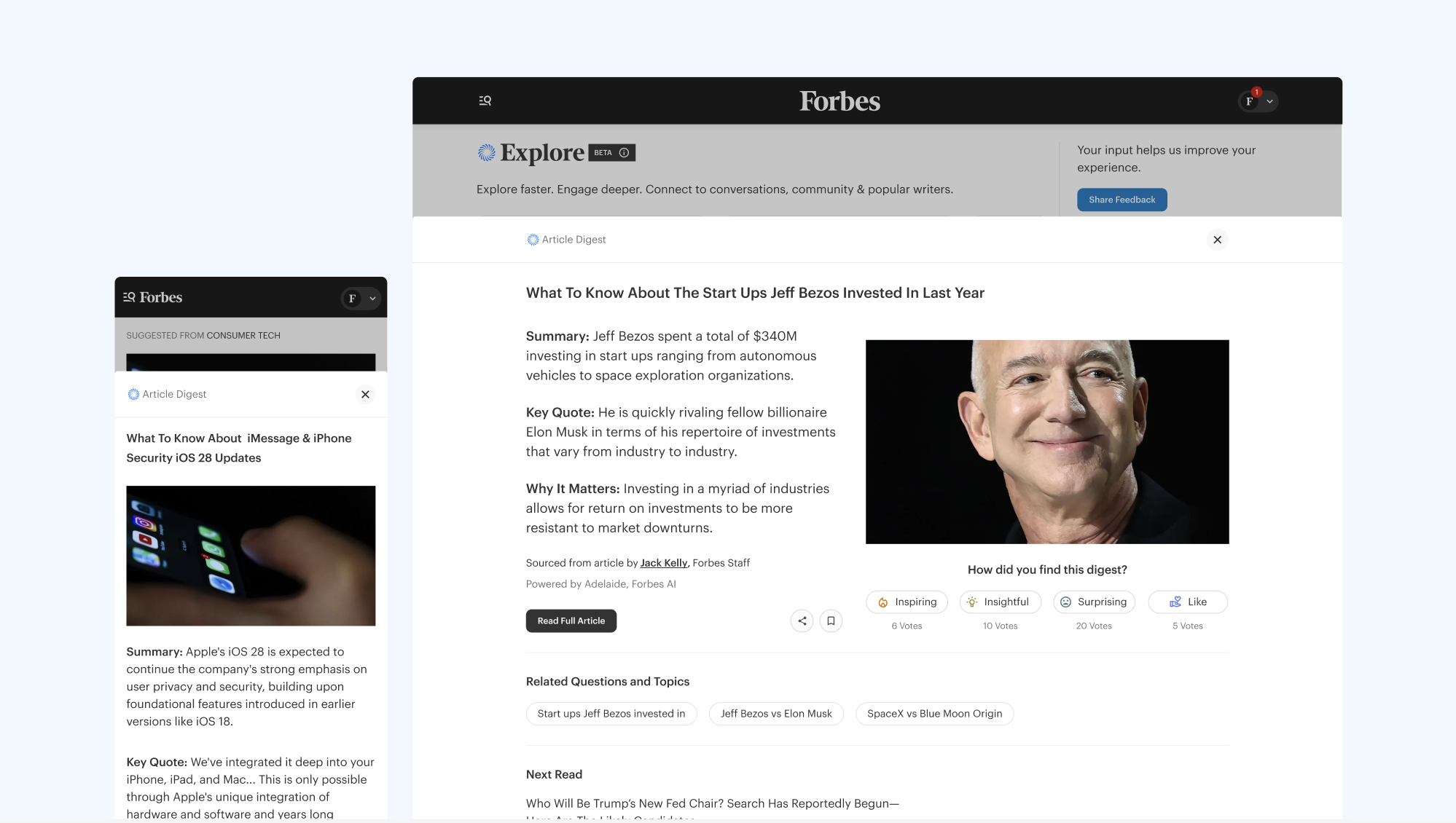
Social Commentary Layer: Reader Reactions
At its core, news is social and reactionary. Reader Reactions were inspired by the nudge theory; surfacing lightweight social cues; such as: 'Readers found this: Insightful, Surprising, etc.'
This was to signal value, and extrinsincially encourage engagement with content that another reader might otherwise have overlooked.
By using social proof as a peer-to-peer recommendation signal, Reader Reactions encouraged more engagement with Digests, leading to a higher rate of Digests opened per user session MoM after its addition.
Social Commentary Layer: Polls
Polls were generated from article content and added a low-effort social layer that let users quickly share their take on a topic and instantly see how it aligned with, or stacked against, the public's perspective. It was a subtle but effective way to break people out of their echo chambers and spark curiosity beyond their usual point of view.
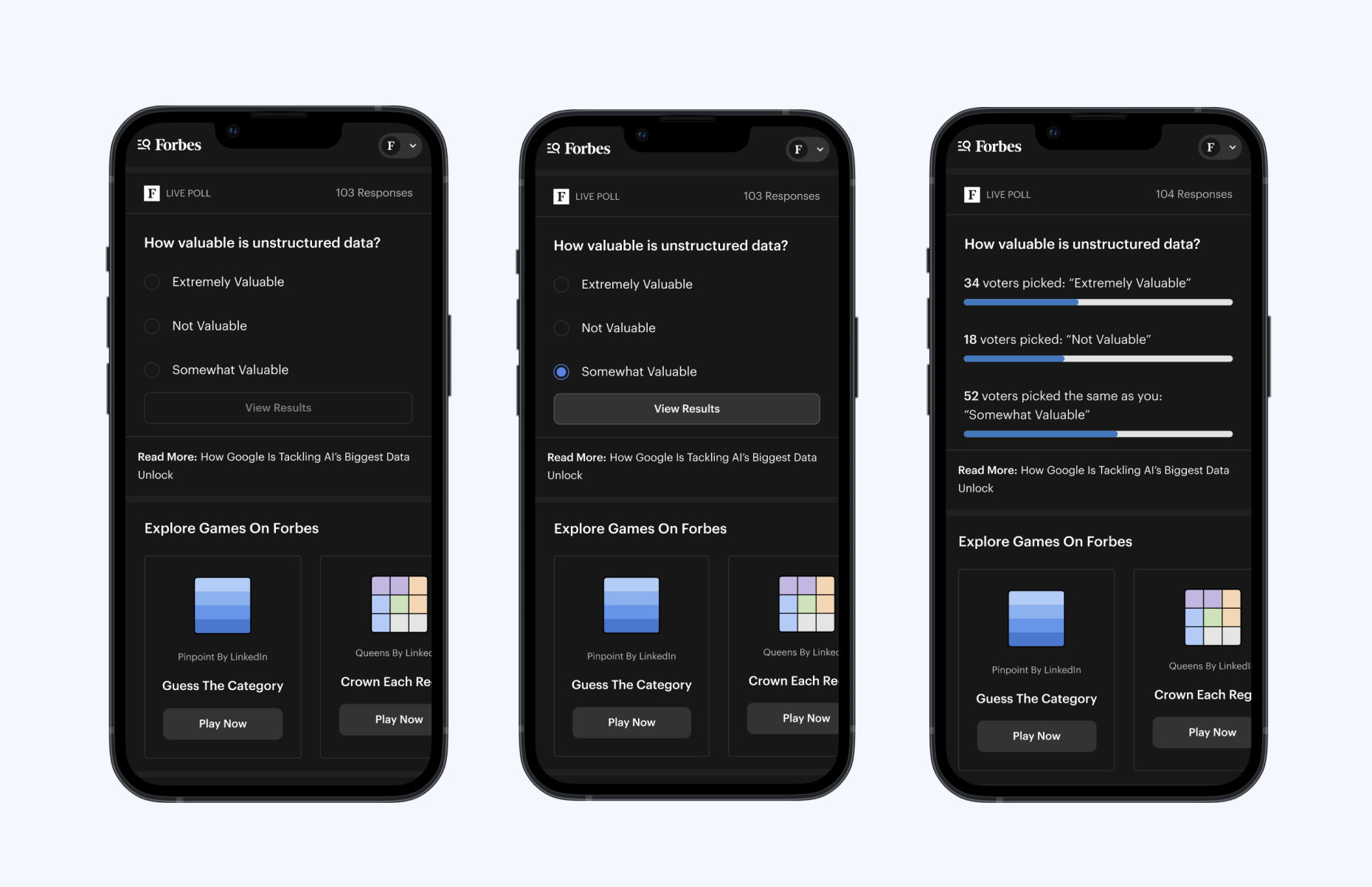
Low Friction Engagement: Next Read
Not a feature per se, but a core interaction design principle was inspired by the effortless swipe behavior seen in TikToks, Shorts, et al. While the constraint was the media type, not the platform, we still aimed to recreate that same sense of flow and lightness.
Instead of traditional page-to-page loads, users could scroll within a Digest panel, click “Next Read,” and instantly transition to the next story within that topic. We leveraged a scroll-to-top interaction to achieve this; interpolating swipeable, snackable behavior into a fast, text-based, web-native experience.
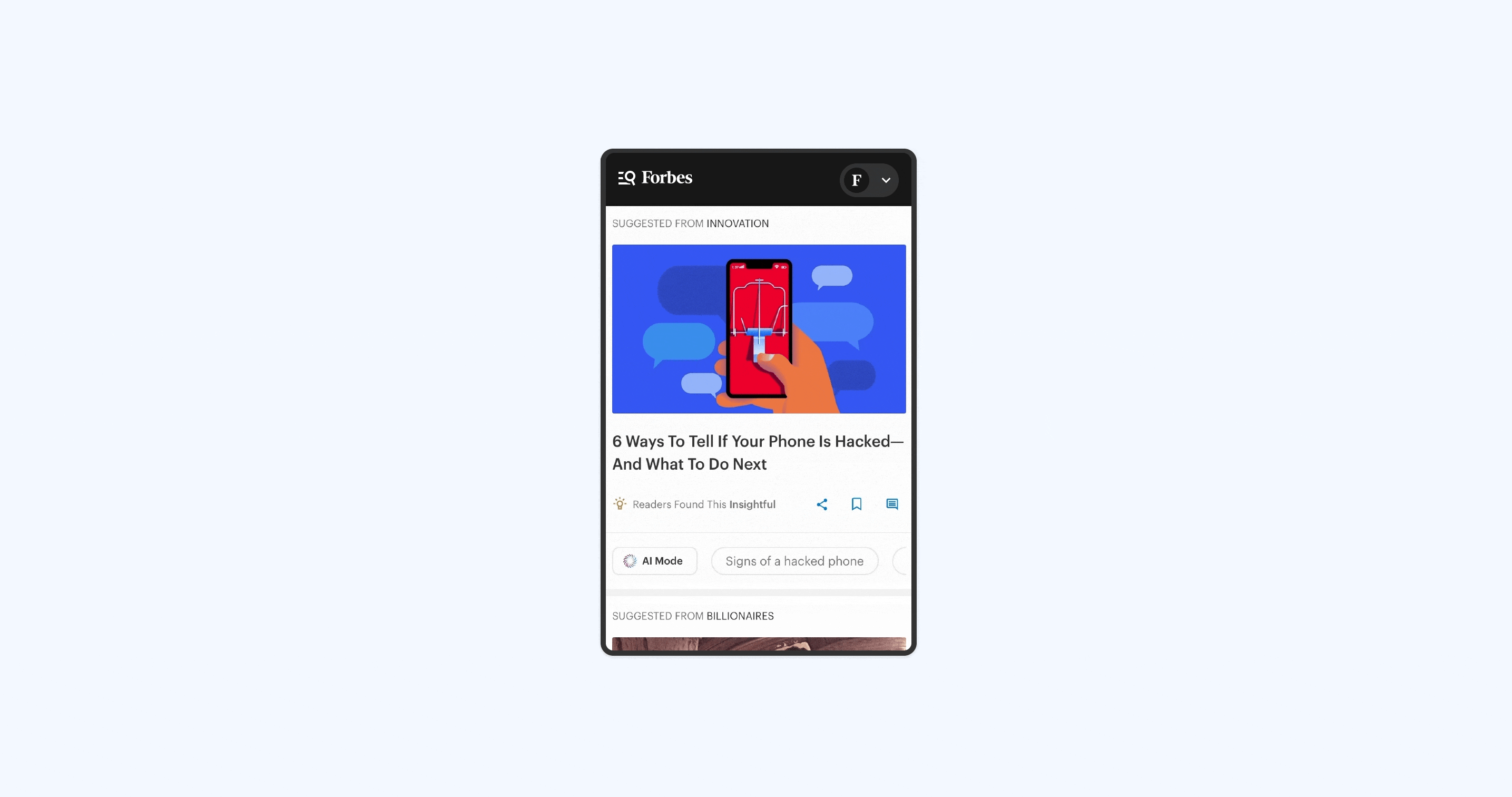
Hover to play (Focus on the Next Read Interaction) Click to play
Lessons Learned: Why This Experience Mattered
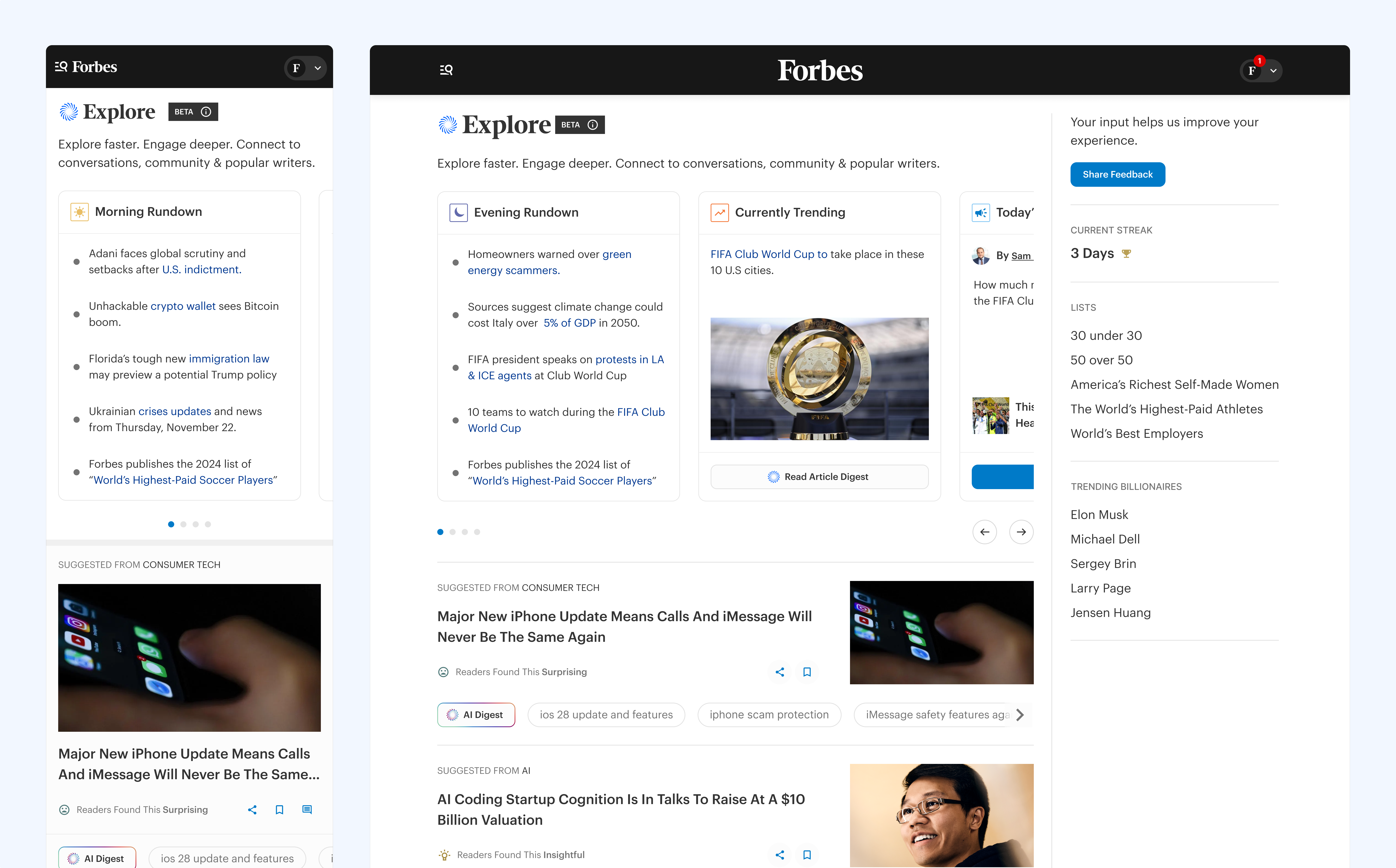
This project reinforced the importance of user-centered design in content platforms. While most digital publishers try to increase engagement by redesigning surfaces,
we focused on redefining how readers consume information.
Explore wasn’t just a new interface,
it was a new contract with the reader: respect their time, and they’ll respect your content.
By focusing on how people are currently discovering and consuming information, we created a more approachable and engaging experience that met readers'
consumption needs.
Working with the Explore team was a rewarding experience, and I’m grateful to have collaborated with such a small but talented group. With a high level of autonomy and responsibility, I grew significantly as a designer and professional, gaining clarity on the types of problems I enjoy solving.
Though Explore no longer exists today as its standalone product, the experiment's success has influenced other product initiatives, with features from Explore being interpolated or scaled into core Forbes' products.

